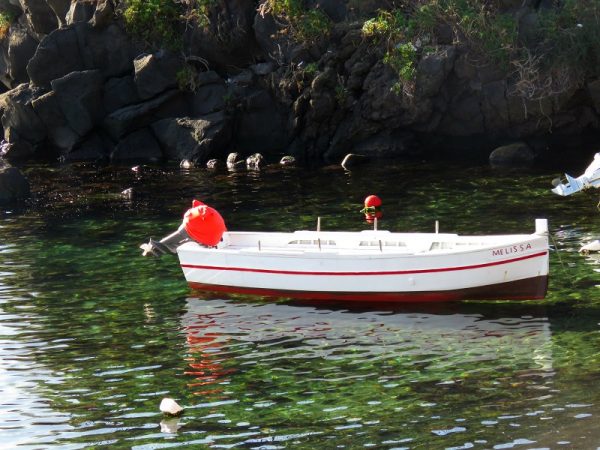Stazzo and St Tecla are seaside villages that belong to the town of Acireale. The wide territory of this municipality makes these villages rise a few kilometers away from the main town. They almost look independent towns themselves. From Stazzo, you see Acireale so far away! But centuries of history and a common geography do unite them. The long lava rock coast which is a main characteritic of Stazzo, in fact, stretches up to Acireale’s seaside neighbourhoods. And St Tecla is in the middle. All those lavas come from different eruptions, but with only one protagonist: Mt Etna, of course.
St Tecla, the eruption and “the dam”
The lava that got to St Tecla is one of the oldest in the history of Etna we know. Studies also reported by the web site IL VULCANICO remind us how this large lava stream reached the coast after starting from the eruption of crater Mt Gorna. It was 396 BC, and the eruption started at the very foot of the volcano! It was a great one too, in fact in that historical time of Mediterranean naval battles, it stopped the Carthaginian fleet from attacking Sicily!
In order to reach the sea, the lava fell down from the promontory of Timpa, in large fire falls! Then it opened as a fan-shaped barrier, closing part of the sea’s water in ponds. It formed a real dam and made the coast line advance many meters forward. Do not be surprised, so, if passing through St Tecla you see part of its territory (many citrus groves) a few meters below the sea level!
The village of St Tecla
 rocky coast and deep water
rocky coast and deep water
In the 10th century AD, the Arab armies from Taormina landed on this coast and founded a first military camp here. Later the fishing village was formed, which still exists today. Fortified in the 16th century with the construction of a lava tower, the village managed to repel a ferocious pirate attack in 1582 (seven galleys and three hundred men). The name of the town may refer to a mysterious saint of the Greek Orthodox cult. But it is more likely that it takes its name from Shant Tagh’la, in Arabic: landing place. In the Norman period, however, there was a small church dedicated to St Tecla here.
The village still lives on fishing today, although it has long since become a well-known summer tourist resort. The beaches are small, narrow and stony. The most popular is located right at the southern entrance of the village, on the seafront called “Le Cocole”. Another beach is located near the small port. But many people – especially the younger ones – venture along the cliffs overlooking the sea, around the “garitta“ (the medieval tower).
Stazzo and the eruption of Mt Ilice
For many years, due to an error of assessment, the Stazzo cliffs were mistakenly identified with the eruption of 1329 (Monterosso crater, Aci Sant’Antonio). Instead it has recently been discovered that they are much older lavas, dating back to the 11th century. In that period, in fact, between 1030 and 1060 the eruptive cone now known as Mt Ilice formed. The lava coming from that fracture reached the coast where Stazzo stands today, forming the marvelous rocky sculptures the village and its pier overlook today.
The village of Stazzo
For centuries, after the eruption, the Stazzo area remained uninhabited. The first human traces on that coast date back to the 16th century, when a tavern was built there. It also had a shelter for those who went from Messina to Catania through the dense and dangerous “wood of Aci”. The village as we see it today only began to form in the 19th century, around the mooring of boats and the furnace where they worked clay. In Sicilian the furnace is called “stazzuni” hence “o ‘stazzu“, Stazzo, the name of the town.
In the first village there was already a church dedicated to St John Nepomuchen. The current temple was built on that previous building in 1908. If you admire it from the pier you will enjoy also a spectacular view of Mount Etna behind it. The only beach in Stazzo, made up of pebbles, is the one close to the pier, perfect for families with children. The rest of the coast is made up of coves, small bays, overhanging rocks that in summer the bathers make comfortable thanks to the construction of wooden platforms. The most inaccessible part is also the most beautiful, the so-called “Costa delle Cale”, which connects the Stazzo rocks to nearby Pozzillo’s.
(photo by G MUSUMECI)